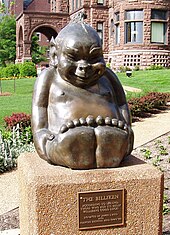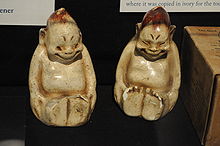
Osaka is a designated city in the Kansai region of Honshu in Japan, and one of the three major cities of Japan (Tokyo-Osaka-Nagoya). It is the capital of and most populous city in Osaka Prefecture, and the third most populous city in Japan, following the special wards of Tokyo and Yokohama. With a population of 2.7 million in the 2020 census, it is also the largest component of the Keihanshin Metropolitan Area, which is the second-largest metropolitan area in Japan and the 10th largest urban area in the world with more than 19 million inhabitants.

Tennōji is one of 24 wards of Osaka, Japan. It is named after the Shitennō-ji, the temple of the Four Heavenly Kings, which is located in the ward.

Tsūtenkaku, owned by Tsūtenkaku Kanko Co., Ltd., is a tower and well-known landmark of Osaka, Japan and advertises Hitachi. It is located in the Shinsekai district of Naniwa-ku, Osaka. Its total height is 103 metres (338 ft); the main observation deck is at a height of 91 metres (299 ft).
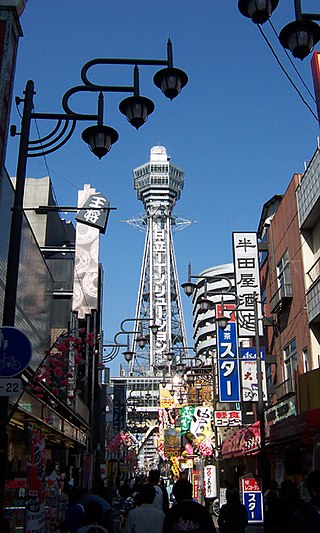
Shinsekai is an old neighbourhood located next to south Osaka City's downtown "Minami" area. The neighbourhood was created in 1912 with New York as a model for its southern half and Paris for its northern half. At this location, a Luna Park amusement park operated from 1912 until it closed in 1923. The centrepiece of the neighbourhood was Tsutenkaku Tower.
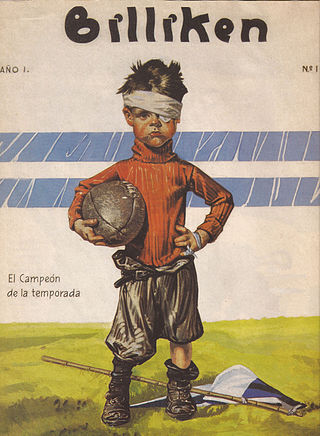
Billiken is a weekly children's magazine published in Buenos Aires, Argentina, the oldest Spanish language magazine for young people. It was created by the Uruguayan journalist Constancio C. Vigil and its first issue appeared on November 17 of 1919.

John Reinhold "Chief" Bender was an American football player and coach of football, basketball and baseball. He served as the head football coach at Black Hills State University (1905), Washington State University, Haskell Indian Nations University (1908–1909), St. Louis University (1910–1911), Kansas State University (1915), and the University of Tennessee (1916–1920), compiling a career record of 67–32–7. He is one of the few college football head coaches to have non-consecutive tenure at the same school. Bender was also the head basketball coach at Washington State (1907–1908) and Tennessee, and the head baseball coach at Washington State and Tennessee.

The Saint Louis Billikens men's basketball team is the intercollegiate men's basketball program representing Saint Louis University. They compete in the Atlantic 10 Conference. The head coaching position is currently held by Travis Ford. Chaifetz Arena is home to the Billikens. The Billikens have reached the championship game of the NIT tournament four times and have won it once (1948). They have appeared in the NCAA Division I men's basketball tournament ten times, most recently in 2019.

The Saint Louis Billikens men's soccer team is an intercollegiate varsity sports team of Saint Louis University. The Saint Louis Billikens compete in the Atlantic 10 Conference in the National Collegiate Athletic Association Division I. Soccer is the main fall sport at SLU, which has not sponsored football since 1949.
Kamagasaki (釜ヶ崎) is an old place name for a part of Nishinari-ku in Osaka, Japan. Airin-chiku (あいりん地区) became the area's official name in May 1966.

The Saint Louis Billikens are the collegiate athletic teams that represent Saint Louis University, located in St. Louis, Missouri. The Billikens compete in Division I of the National Collegiate Athletic Association (NCAA) as a member of the Atlantic 10 Conference. The school has nationally recognized soccer programs for men and women. The school has heavily invested in its on-campus athletic facilities since the 1990s with the creation of Hermann Stadium and Chaifetz Arena. Chris May is the current director of athletics of the St. Louis Billikens.
Bruce Rudroff was a U.S. soccer defender. Rudroff played three seasons in the North American Soccer League and four in the Major Indoor Soccer League. He also earned two caps with the U.S. national team.
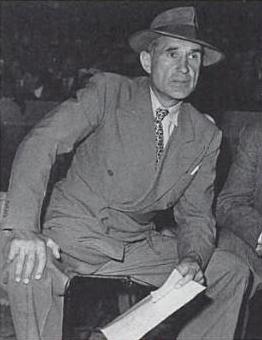
Wilfred Joseph "Dukes" Duford was an American college football player, coach, and university athletic director. He was the head football coach at Saint Louis University, Saint Ambrose University, and the University of Saint Mary (Kansas).
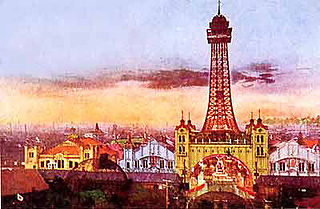
Osaka's Luna Park was Japan's second amusement park of the same name, replacing the destroyed Luna Park in Tokyo. In operation from 1912 to 1923, the 132,000 square meter park in the Shinsekai section of Osaka featured a unique entrance: an aerial tramway from the original Tsutenkaku Tower.
Kevin Kalish is an American soccer coach and former player who, as of 2018, was serving as head coach of the Saint Louis Billikens men's soccer team. He played professionally in the National Professional Soccer League.
The 1908 Saint Louis Blue and White football team was an American football team that represented Saint Louis University as an independent during the 1908 college football season. In its third and final season under head coach Eddie Cochems, the team compiled a 6–2–2 record and outscored opponents by a total of 119 to 36. The team played its home games at Sportsman's Park in St. Louis.
The 1927 Saint Louis Billikens football team was an American football team that represented Saint Louis University as an independent during the 1927 college football season. In their second and final season under head coach Robert L. Mathews, the Billikens compiled a 5–5 record and outscored opponents by a total of 140 to 101. The team played its home games at St. Louis University Athletic Field and Sportsman's Park in St. Louis.
The 1921 Saint Louis Billikens football team was an American football team that represented Saint Louis University as an independent during the 1921 college football season. In their first season under head coach Stephen G. O'Rourke, the Billikens compiled a 4–4–1 record and was outscored by a total of 148 to 76. The team played its home games at St. Louis University Athletic Field on the school's campus and at Sportsman's Park in St. Louis.
The 1919 Saint Louis Billikens football team was an American football team that represented Saint Louis University as an independent during the 1919 college football season. In their second season under head coach Charles M. Rademacher, the Billikens compiled a 4–2–2 record and outscored opponents by a total of 71 to 28. The team played its home games at Sportsman's Park at St. Louis.
The 1917 Saint Louis Billikens football team was an American football team that represented Saint Louis University as an independent during the 1917 college football season. In their first and only season under head coach Charles M. Rademacher, the Billikens compiled a 4–3–1 record and outscored opponents by a total of 79 to 61.
The billiken is a charm doll invented in 1908.

